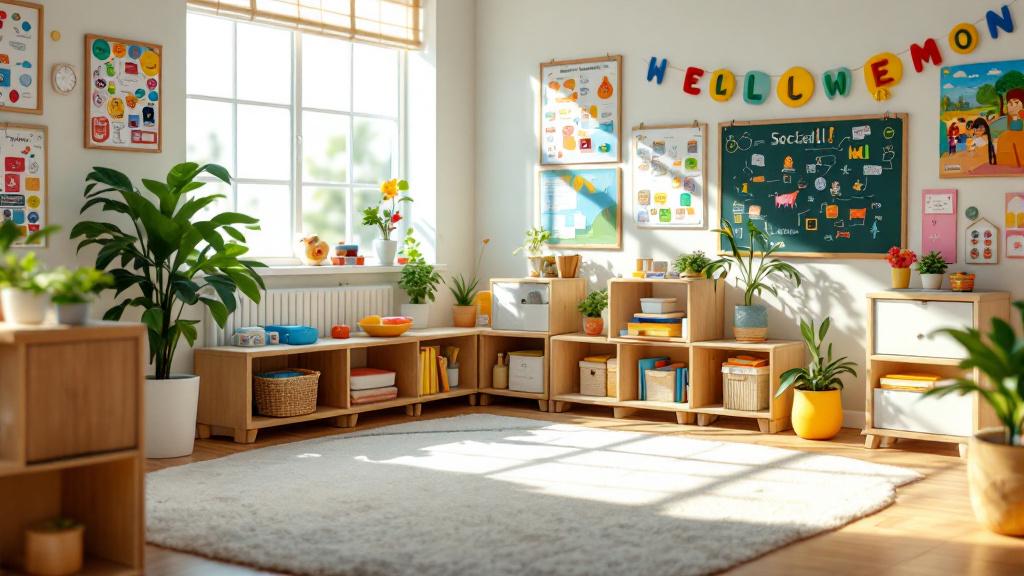Unlocking Daily Living Skills in a Familiar Environment
Home-based ABA therapy is a tailored approach that leverages the natural environment to teach essential daily living skills to children with autism. This personalized setting offers unique advantages that promote meaningful, real-world learning, which is crucial for increasing independence and confidence in daily routines.
Effective Strategies for Teaching Daily Living Skills
What are some effective strategies for teaching daily living skills to children with autism?
Teaching daily living skills to children with autism requires a structured and individualized approach. Visual supports such as checklists, schedules, and picture charts provide clear, predictable cues that help children understand what is expected of them. These aids not only facilitate learning but also promote independence by making routines more manageable.
Task analysis is a fundamental technique that involves breaking down complex skills into smaller, manageable steps. For example, brushing teeth can be divided into steps like picking up a toothbrush, applying toothpaste, brushing, rinsing, and putting away the toothbrush. This step-by-step guidance makes learning less overwhelming.
Incorporating prompting techniques, such as verbal cues, physical guidance, or visual prompts, helps children perform tasks correctly in the beginning. Prompts are gradually faded over time to encourage independence. Reinforcement, whether through praise, tangible rewards, or preferred activities, motivates children to practice and master skills.
ABA therapy emphasizes individualized teaching strategies delivered in natural environments like home, school, and community settings. This real-world application fosters the generalization of skills—meaning children can apply what they learn across different contexts.
Hands-on practice and engaging in real-life experiences are essential components. For example, practicing meal prep during cooking or using the bathroom during daily routines helps solidify skills in meaningful ways. Combining these approaches within a structured, supportive framework enhances skill acquisition and promotes independence.
Methods and Techniques for Developing Independent Skills

What techniques and methods are used in ABA therapy to develop independent living skills?
ABA therapy employs a blend of structured, evidence-based strategies to help children gain essential daily living skills. One fundamental approach is task analysis, which involves breaking down complex activities—such as brushing teeth or preparing a simple snack—into small, manageable steps. This makes learning less overwhelming and allows for clear, targeted instruction.
To guide correct responses, therapists use prompting techniques such as verbal cues, physical guidance, or visual aids. Over time, prompts are gradually faded in a process called prompt fading, encouraging independence while maintaining support during learning.
Shaping and reinforcement strategies play vital roles. Shaping involves reinforcing successive approximations towards the desired skill, gradually guiding children closer to mastery. Reinforcement—using praise, rewards, or tangible incentives—motivates children to continue practicing and improves the likelihood of skill retention.
Chaining methods—including forward, backward, and total chaining—are employed to teach sequential skills like dressing or cooking. Forward chaining teaches from the first step onward, backward chaining starts from the last step, and total chaining involves teaching all steps simultaneously.
To support understanding and promote skill generalization, visual supports like schedules, charts, and picture sequences are extensively used. These tools help children anticipate routines and transfer skills across different environments.
Finally, generalization across various settings and natural environment teaching (NET) ensures skills learned in therapy are applicable in real life, whether at home, school, or within the community. This comprehensive, tailored approach fosters independence, empowering children to participate actively and confidently in daily activities.
Benefits of Home-Based ABA Therapy
How does home-based ABA therapy help develop daily living skills in individuals with autism?
Home-based ABA therapy is highly effective in teaching daily living skills because it takes place in the child's natural environment. This setting allows therapists to tailor interventions that are directly relevant to the child's daily routines, such as grooming, dressing, toileting, and preparing meals. By practicing these skills at home, children gain confidence and see the immediate practical application of what they learn.
Reducing environmental stressors is another advantage. Familiar surroundings minimize distractions and anxiety, helping children to stay focused and engaged. As a result, they learn skills more quickly and are better able to generalize these skills to other contexts.
This approach actively involves parents and caregivers, who are trained to reinforce behaviors and strategies outside of therapy sessions. This consistent reinforcement not only boosts skill retention but also fosters independence. Practicing in a setting where the child feels comfortable encourages more natural responses and lasting learning.
In addition, home-based ABA therapy makes it easier for children to practice skills in routines they already perform daily. Whether it's brushing teeth, dressing, or meal prep, children gain independence in functional activities.
Overall, this personalized, family-centered approach leads to faster skill development and greater confidence, all within a safe and nurturing environment that promotes ongoing success.
Impact of ABA on Enhancing Daily Skills

How does ABA therapy contribute to enhancing daily living skills in children with autism?
Applied Behavior Analysis (ABA) therapy plays a vital role in helping children with autism develop essential daily living skills. It employs structured, evidence-based strategies such as task analysis, prompting, reinforcement, shaping, generalization, and consistent data collection to teach complex skills in manageable steps.
Through detailed assessments, therapists set specific, measurable, and attainable goals tailored to each child's unique needs. For example, skills like personal hygiene, dressing, eating, toileting, and household chores are broken down into smaller parts, making learning more approachable.
Natural environment teaching is a core component of ABA, where therapy occurs in real-life settings like home or community environments. This approach ensures that learned skills transfer smoothly into daily routines, increasing independence.
Caregiver involvement is crucial. Parents observe, participate, and learn reinforcement and prompting techniques, allowing them to support ongoing skill practice outside of therapy sessions. This consistent involvement enhances the child's ability to generalize skills across various contexts.
Using positive reinforcement, such as praise or rewards, motivates children, encouraging them to practice new behaviors repeatedly. Prompts—verbal cues, physical guidance, or visual aids—initially support skill acquisition, gradually fading to foster independence.
Research shows that these strategies lead to tangible improvements. Children demonstrate better self-care, communication, social interaction, safety awareness, and routine management, which significantly boosts their overall independence.
What are the long-term benefits of using ABA therapy for daily living skill development?
The long-term advantages of ABA therapy are profound. As children master daily living tasks—like personal hygiene, dressing, preparing meals, and managing household chores—they become more self-reliant and confident.
This increased independence facilitates greater participation in social settings and community activities, reducing their reliance on caregivers and promoting inclusivity.
Skill retention over time is supported through consistent practice and reinforcement, ensuring abilities are maintained in various settings such as home, school, and community.
Furthermore, early and intensive ABA interventions often result in improved behavioral regulation, better academic outcomes, and enhanced communication skills.
Ultimately, these gains contribute to a higher quality of life. Children are better equipped to navigate daily routines, engage socially, and pursue greater autonomy in their lives.
| Aspect | Benefits | Details |
|---|---|---|
| Independence | Increased self-reliance | Mastery of daily tasks like dressing and hygiene |
| Social Participation | Better social integration | Active involvement in community activities |
| Communication | Improved interaction | Requesting items, following instructions |
| Behavioral Skills | Better self-control | Reduced problematic behaviors |
| Long-term Outcomes | Enhanced quality of life | Lifelong skills and confidence |
In summary, ABA therapy systematically builds foundational skills that lead to meaningful, lasting improvements in the lives of children with autism, fostering independence, confidence, and social engagement.
Fostering Independence and Life Skills at Home
In-home ABA therapy is a powerful tool in the development of daily living skills for children with autism. Its personalized, environment-specific approach not only accelerates skill acquisition but also ensures these skills are meaningful and sustainable across various aspects of everyday life. By actively involving families and leveraging natural routines, in-home ABA supports children in becoming more independent, socially engaged, and confident, ultimately enhancing their overall quality of life and enabling greater participation in the community.
References
- How ABA Therapy Helps with Daily Living Skills
- How ABA therapy can help children with autism develop ...
- How In-Home ABA Therapy Builds Real-Life Skills for Children with ...
- Home-Based ABA Therapy: Personalized Benefits for Autism
- Incorporating ABA Therapy Activities into Daily Routines at Home
- Boosting Independence: Self-Care and Daily Living Skills Through ...
- Daily Living Skills in ABA Therapy: Helping Your Child Thrive!
- Why Home-based ABA Therapy Is A Gamechanger
- Benefits of ABA Therapy at Home and What to Expect






